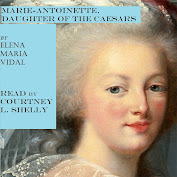It never occurred to me that there was any question about the personhood of women but it seems that in some circles there are. From Dr. Angela Franks in Church Life Journal:
Let us connect the dots. By the fact of their human nature, shared
with men, women are also conscious, rational, creative, and free
persons. Like all persons, they are structured to flourish through
self-possession and self-governance, which leads to their self-formation
through freely chosen virtuous action. Attempting to outsource this
responsible and intelligent activity to someone else, even one’s
husband, is not only bound to lead to disintegration, even mental
illness. Such outsourcing is also impossible, because personhood is
incommunicable. A human person cannot in fact uproot her
self-determining personal structure.
This personal structure allows for and is perfected in the virtue of
obedience, which is owed by all human beings to God and to legitimate
human authorities. Yet a totalitarian imposition of arbitrariness or a
denial of a person’s rationality, done in the name of hierarchical
“obedience,” will taint the whole community. Such poorly conceived
“obedience” leads to malformation and abuse, as too many recent examples
in religious life testify. Indeed, a healthy community—explicitly
including the family, as Wojtyła notes when speaking of parents—must
allow for moments of healthy opposition.[16]
A rigid conformism is not virtuous self-denial but instead rooted in
the desire to avoid uncomfortable conflict; it actually selfish.
Right-wing power fetishists try to claim certain basic human actions
as prerogatives of the male sex, such as thinking and arguing about the
good, acting freely and creatively in moving toward that good, and
possessing and governing oneself. Such actions, they argue, pertain
properly only to the leadership and strength of men, and furthermore the
wife is owned by the husband.[17] As a result, a wife should defer to her husband on all intellectual and practical matters. As one book’s chapter titles
state, “The Basics: Do Whatever He Tells You,” which also means “Wear
What He Likes, Do What He Likes.” On Wojtyła’s terms, this denial of the
personalistic structure of women amounts to their dehumanization.
It should not need to be said that this is not how Jesus interacted
with women, nor how he relates to his bride the Church, for whom he
died: “Christ loved the Church and gave himself up for her” (Eph 5:25).
Paul does not exhort husbands to rule over their wives or discipline
them as though they were children. Rather, he insists that their primary
job is not ruling at all but instead love:
In the same way, husbands should love their wives as they do their
own bodies. He who loves his wife loves himself. For no one ever hates
his own body, but he nourishes and tenderly cares for it, just as Christ
does for the Church, because we are members of his body. “For this
reason a man will leave his father and mother and be joined to his wife,
and the two will become one flesh.” This is a great mystery, and I am
applying it to Christ and the Church. Each of you, however, should love
his wife as himself, and a wife should respect her husband (Eph
5:28-33).
The wife can only be loved like the body of the husband (echoes of
the Church once more), and a husband can only love himself by loving his
wife, if they are both equally and fully human. For Karol Wojtyła, the
creative drama of the relations between the sexes requires nothing less. (Read more.)
























